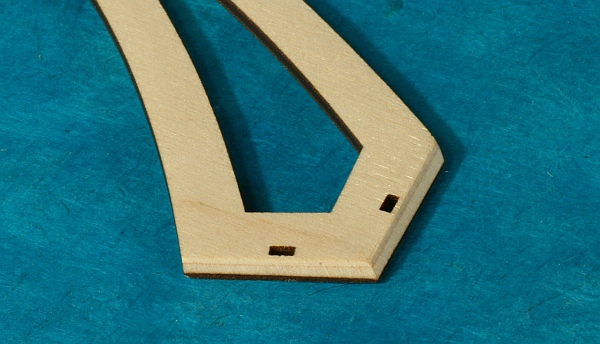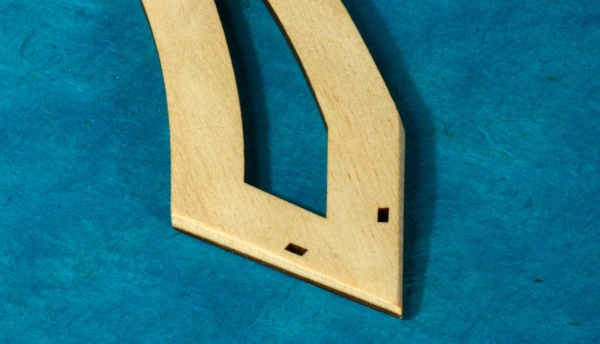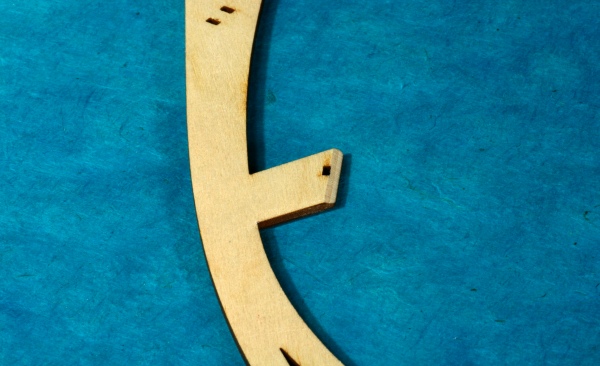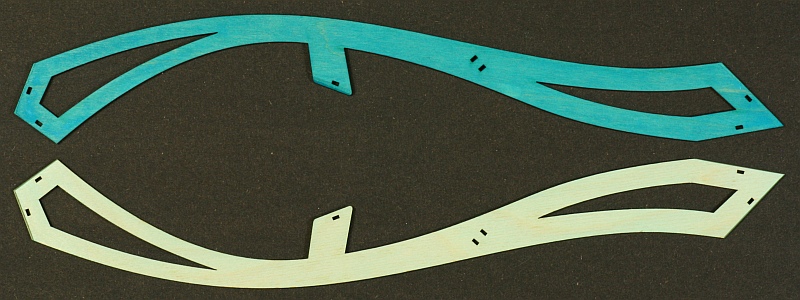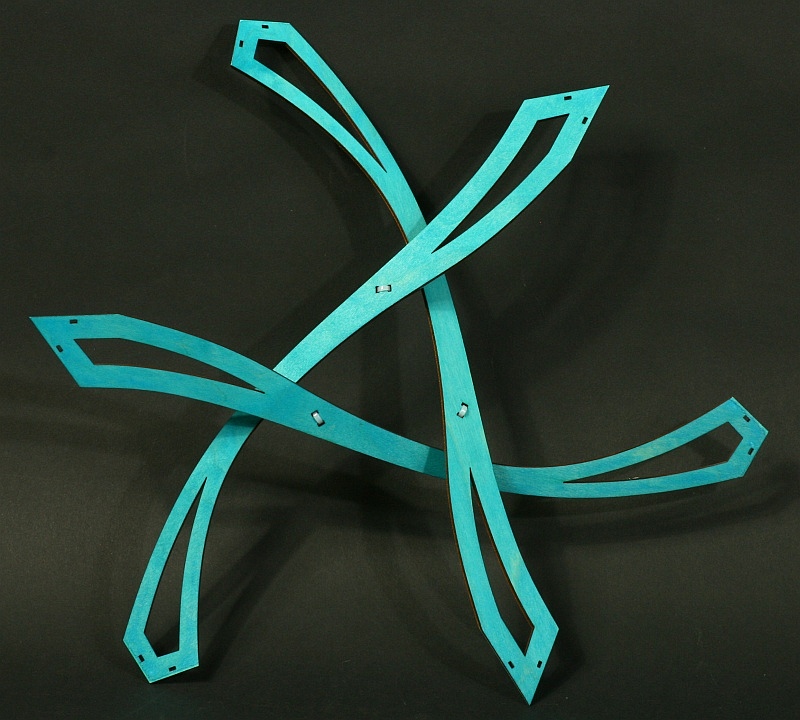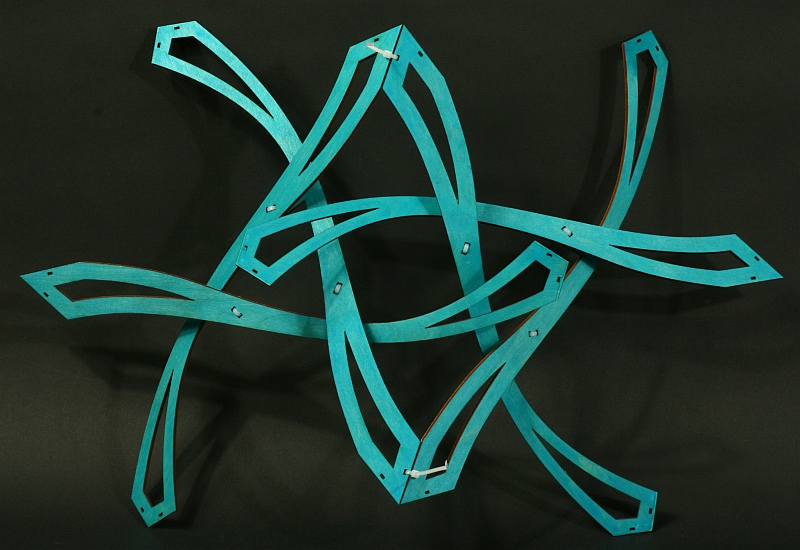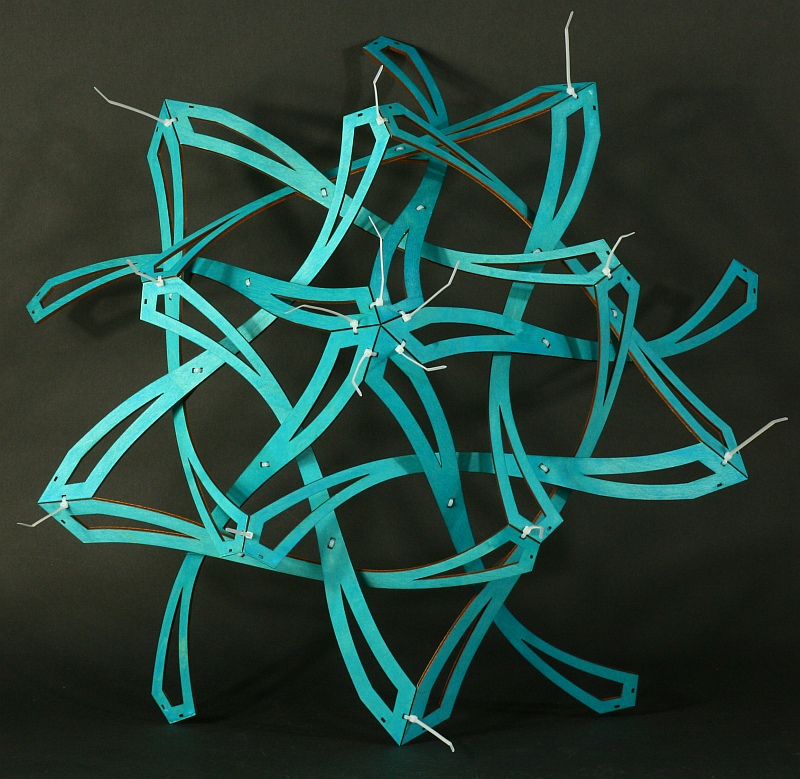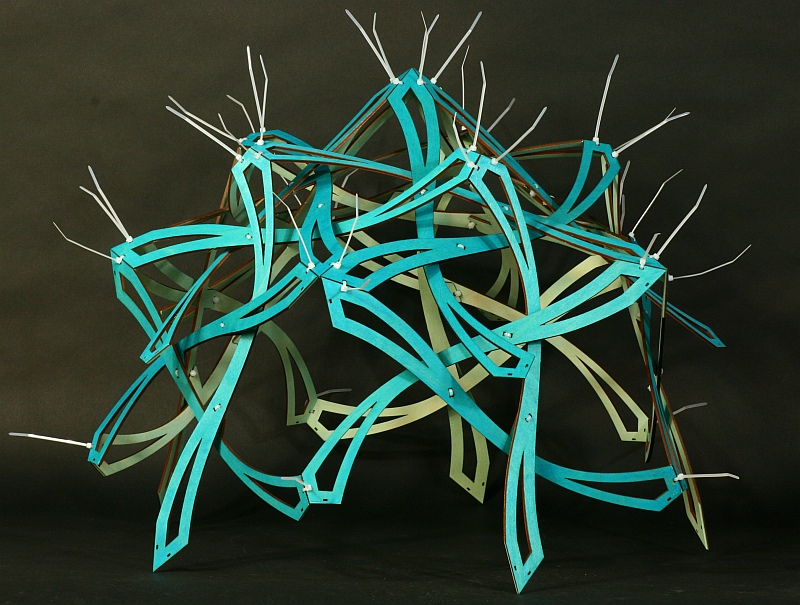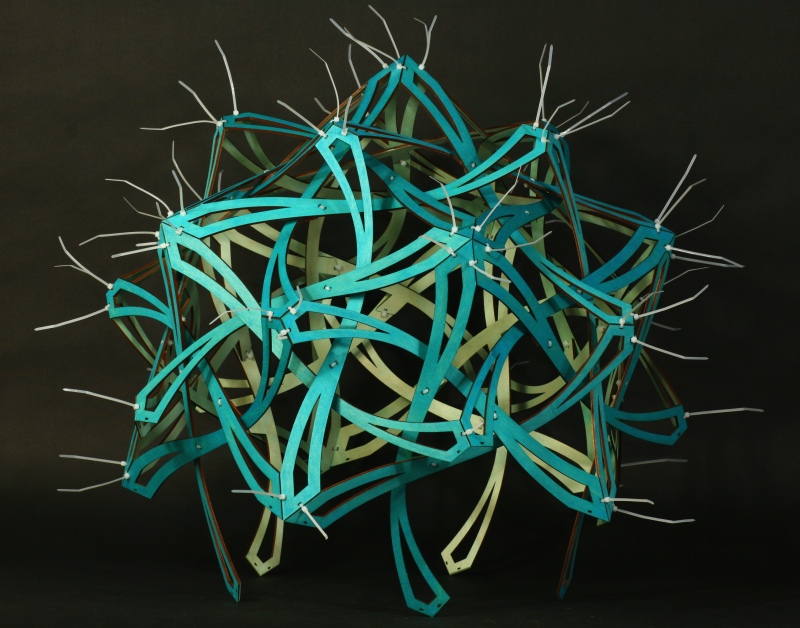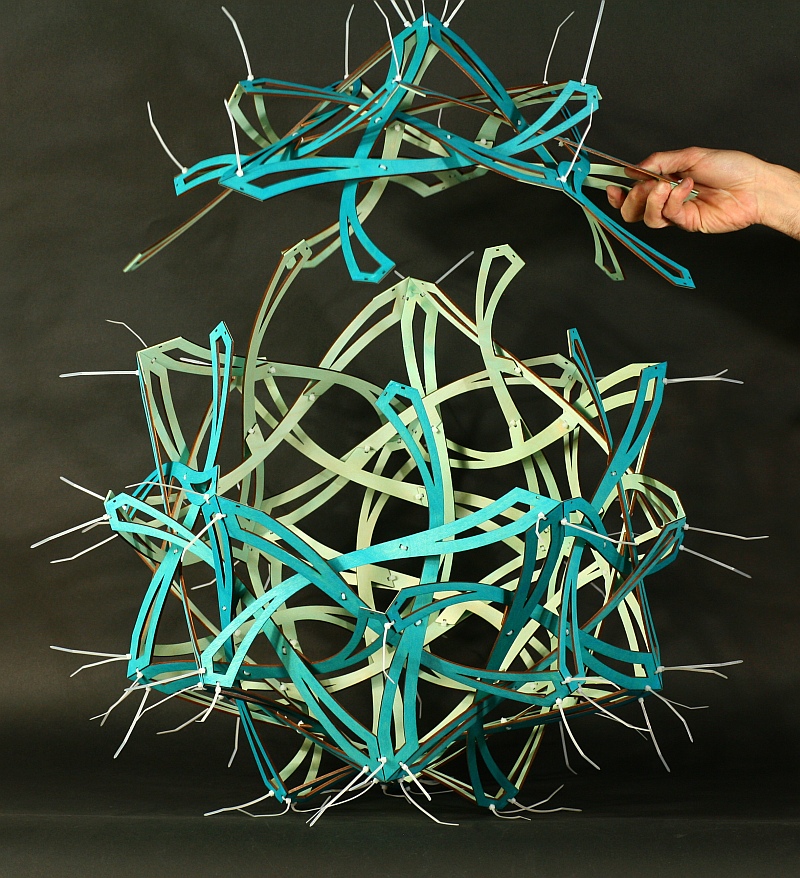6. Check each module to ensure the parts are
properly joined and the ties are tight. You can snip off
the tails with the wire cutter as a mark of which modules you
have checked.
7. Depending on the time available and the maturity of the
class, you might want to give step-by-step assembly instructions
or let them puzzle out how the parts go together. The
general instruction is that the twenty modules assemble like the
twenty faces of an icosahedron, with the pointy corners serving
as the vertices of the triangles. If giving detailed
instructions, first point out that whenever two modules join,
two cable ties are needed to make the connection, as shown
above. Note that we are letting these cable tie tails
stick out, so unlike the other sculptures in this series, we are
not starting these at the back.
8. If giving step-by-step instructions, the next stage is to
join five into a cycle around one 5-fold vertex, as shown
above. If you think of the twenty modules as analogous to
the faces of a regular icosahedron, this corresponds to five
triangles making a pentagonal pyramid around one vertex.
It is OK to have the class work in two groups and make two of
these five-module structures. Put one of the two aside for the
last step below and continue working on the other one in the
following two steps.
9. At this stage, we have added five more modules around one of
the groups of five. This view is from the side, with the
original 5-fold vertex now at the top. The new five can be
added in parallel, with five groups of students working at once
on all sides.
10. Here, another five modules have been connected, so
everything but the bottom cap of five is complete. Again
these five can be added in parallel.
11. At this stage, we turn it over and the remaining cycle of
five can be added like a hat.
12. When complete, check that all the connections are
correct and all the cable ties are tight. You might notice
in this closeup view that we inserted all the ties in a
consistent manner, so they spiral in the same way around each
vertex, but this is a fine point not to worry about the first
time doing this assembly.
13. Along the way, students should be able to determine that 180
cable ties are required, since each part has six connection
points.



